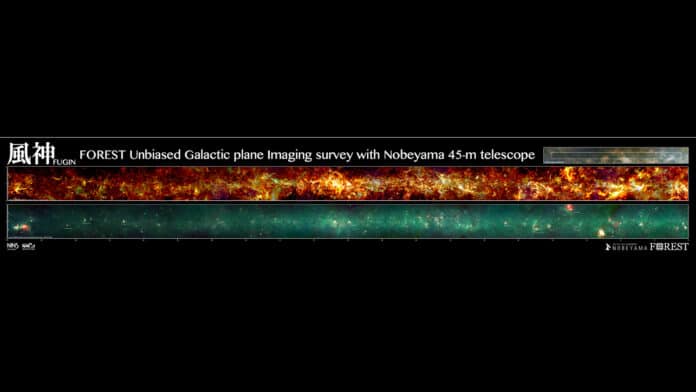Molecular gas and dust coalesce in space to form stars. Although these molecular vapors are too diluted and cold to be seen with the naked eye, they emit faint radio waves that radio telescopes may detect.
When viewed from Earth, there is a great deal of stuff before and behind these molecular clouds, and these overlapping features make it challenging to estimate their distance as well as their size and mass. It has thus been highly challenging to investigate the physical characteristics of molecular clouds from large-scale observations, despite the fact that our Galaxy, the Milky Way, is the only Galaxy in the entire universe that is close enough to allow for detailed observations of molecular clouds.
A study team led by Dr. Shinji Fujita from the Graduate School of Science at Osaka Metropolitan University was able to identify over 140,000 molecular clouds, or regions of star formation, in the Milky Way Galaxy using extensive data of carbon monoxide molecules that were closely examined by the Nobeyama 45-m radio telescope. The research team effectively mapped the distribution of these molecular clouds, covering the first quadrant of the Galactic plane, in the most accurate way possible using artificial intelligence to assess the distance, size, and mass of each of these molecular clouds.
Dr. Fujita said, “The results not only give a bird’s eye view of the Galaxy but will also help in various studies of star formation. In the future, we would like to expand the scope of observations with the Nobeyama 45-m radio telescope and incorporate radio telescope observation data of the sky in the southern hemisphere, which cannot be observed from Japan, for a complete distribution map of the entire Milky Way.”
Journal Reference:
- Shinji Fujita et al. Distance determination of molecular clouds in the first quadrant of the Galactic plane using deep learning: I. Method and results. Publications of the Astronomical Society of Japan. DOI: 10.1093/pasj/psac104
